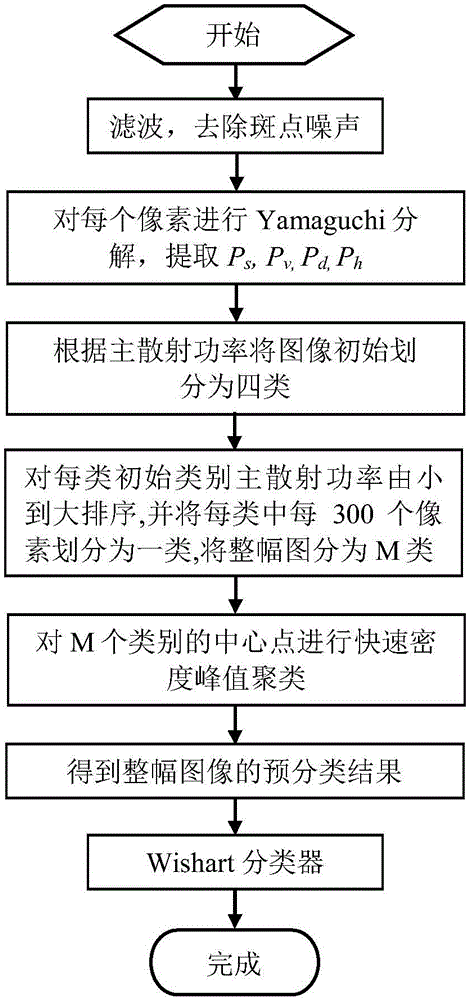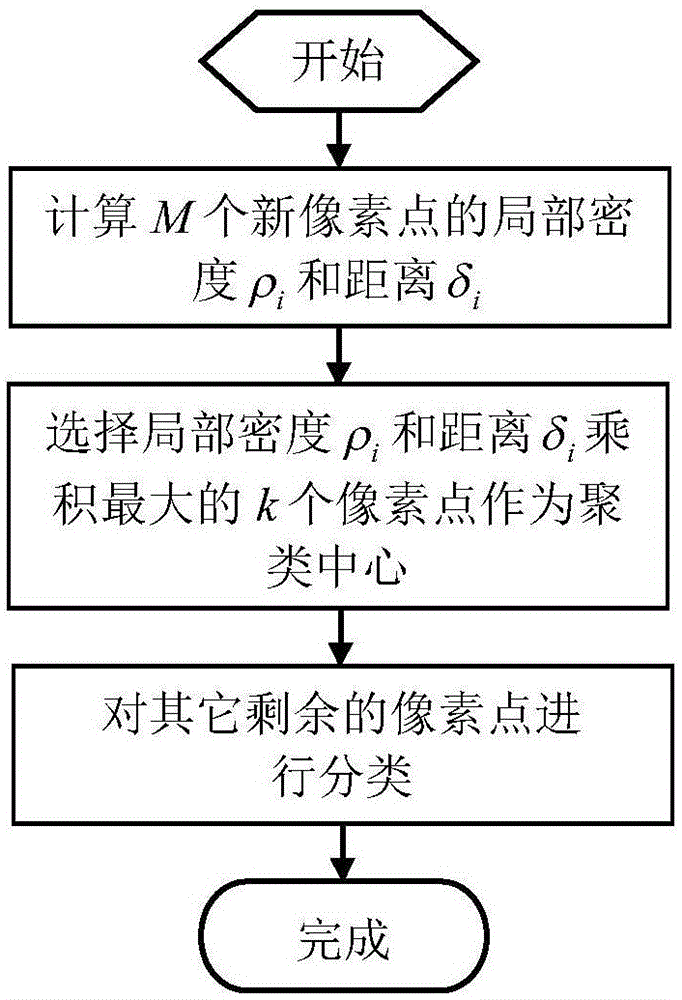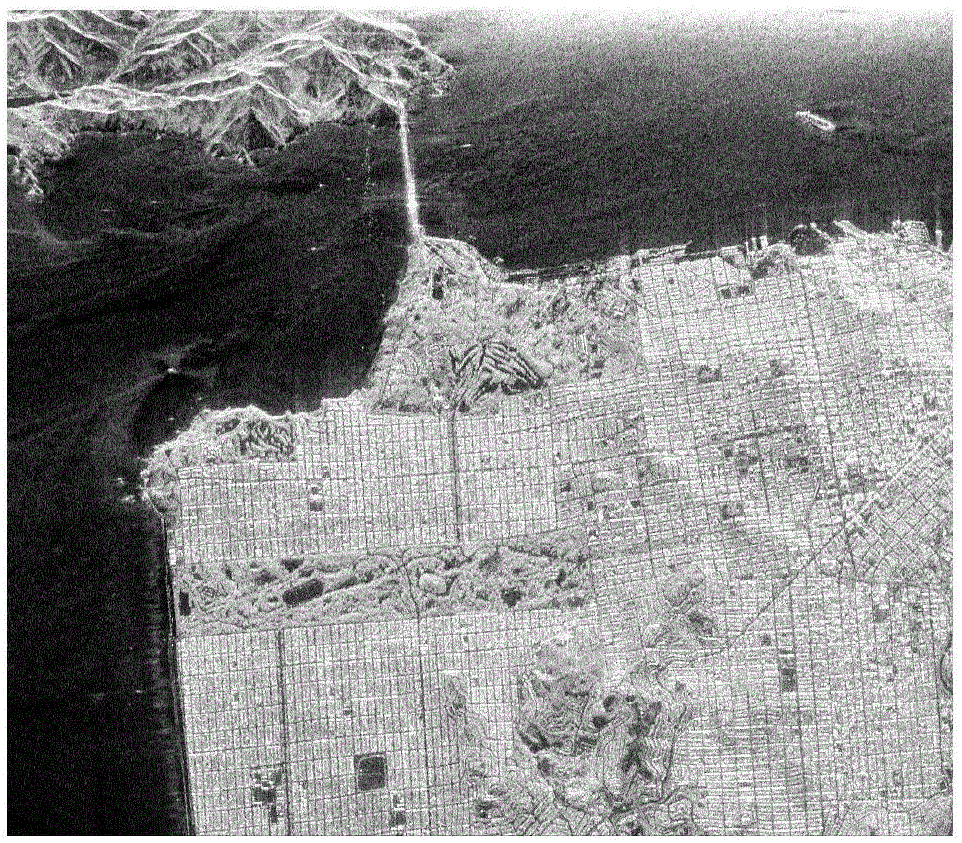Quick density peak value clustering based polarimetric SAR image classification method
A density peak and classification method technology, applied in the field of target recognition, can solve the problems of poor classifier performance, inability to distinguish effectively, and poor maintenance of polarization scattering characteristics, etc., to achieve clear edges and good regional consistency Effect
- Summary
- Abstract
- Description
- Claims
- Application Information
AI Technical Summary
Problems solved by technology
Method used
Image
Examples
Embodiment Construction
[0031] refer to figure 1 , the implementation steps of the present invention are as follows:
[0032] Step 1: filter the polarimetric SAR image to be classified, remove speckle noise, and obtain the filtered polarimetric SAR image.
[0033] The filtering of polarimetric SAR images usually adopts the existing refined polarimetric LEE filtering method, and the size of the filtering window is 7×7.
[0034] Step 2: Perform Yamaguchi decomposition on the coherence matrix T of each pixel in the filtered polarimetric SAR image to obtain the volume scattering power P of each pixel v , dihedral scattered power P d , surface scattering power P s and the helical scattering component P h .
[0035] Yamaguchi decomposition is a polarization target decomposition method. Different ground objects have different scattering characteristics. According to the scattering characteristics of different ground objects, this method decomposes the coherence matrix of each pixel into a linear combin...
PUM
 Login to View More
Login to View More Abstract
Description
Claims
Application Information
 Login to View More
Login to View More - R&D
- Intellectual Property
- Life Sciences
- Materials
- Tech Scout
- Unparalleled Data Quality
- Higher Quality Content
- 60% Fewer Hallucinations
Browse by: Latest US Patents, China's latest patents, Technical Efficacy Thesaurus, Application Domain, Technology Topic, Popular Technical Reports.
© 2025 PatSnap. All rights reserved.Legal|Privacy policy|Modern Slavery Act Transparency Statement|Sitemap|About US| Contact US: help@patsnap.com



